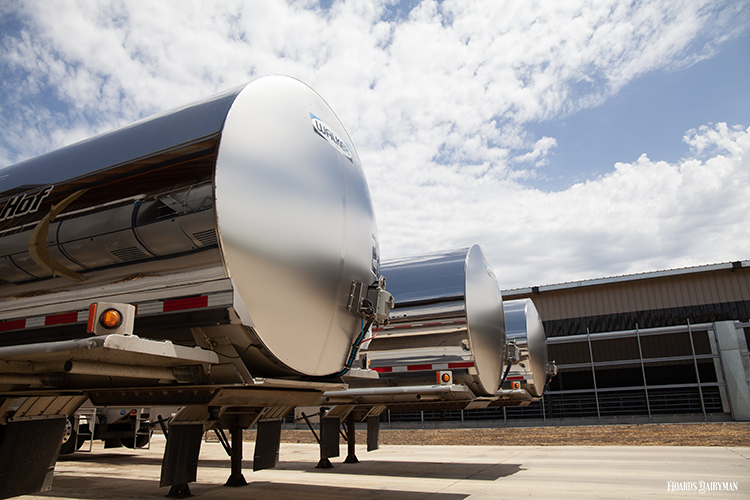
Not necessarily.
The USDA’s Dairy Market News has reported discounted loads of spot milk in the Upper Midwest that have been trading around $10 per hundredweight under the Class III price every week since the beginning of the year.
Such steeply discounted spot loads of milk stretching through the first four months of the year may have previously suggested a widespread surplus of milk. However, the U.S. milk supply is less burdensome than the discounted loads of milk suggest.
Milk production in the first quarter of 2023 is up 1% YOY, according to USDA Milk Production report data. By normal standards, this would be considered slow growth. The long-term growth rate is closer to 1.5% annually. Not only is production growing slower than normal, but the comparison is against a very easy-to-beat production level in 2022. From January through March 2023, dairy producers in the U.S. made less milk than at the same point two years ago in the first quarter of 2021.
Despite modest milk production growth on a national level, regional dynamics continue to drive expansion away from the coasts and into the middle of the country, ranging from the I-29 corridor to Southwest Kansas and the Texas Panhandle.
- National production in March 2023 was effectively the same as in March 2021.
- South Dakota increased production 23% over those two years and produced an additional 80 million pounds in March 2023 compared to March 2021.
- Texas produced an additional 153 million pounds.
Plant expansions and new investments in processing — primarily cheese manufacturing — have made these pockets of growth possible. The challenge with a boom in large-scale milk production, combined with large-scale cheese manufacturing, is that the system lacks a means of balancing when you have a strong flush, unplanned plant downtime, or both. Without other plants that can easily flex to take more or less milk in an area, surplus loads of milk must travel longer distances to find a home. And they must trade at a sometimes-steep discount to make that feasible.
No farmer likes discounted milk, and dumping milk is even worse, but these issues appear to be relatively localized and isolated. National production is more restrained. It should remain that way for most of the rest of this year; cull rates are up due to high beef values, elevated feed costs, and constraints to growth in many regions.
The issues in the middle of the country will likely continue to varying degrees until more flexibility is built into the system. Demand, particularly for cheese, is holding up well, which is good news for the surplus region given the focus on cheese production there. On a national scale, production should remain light, supporting a potential rebound in prices in the second half of the year.








